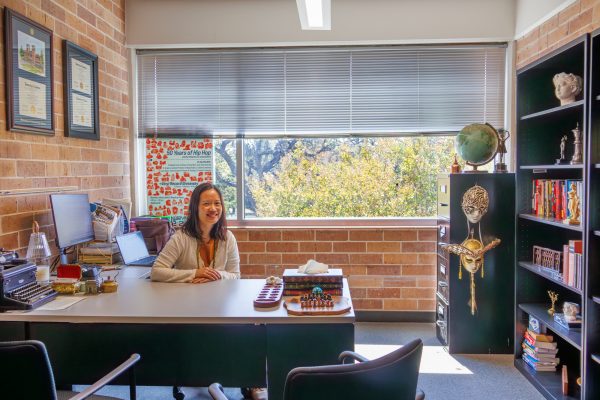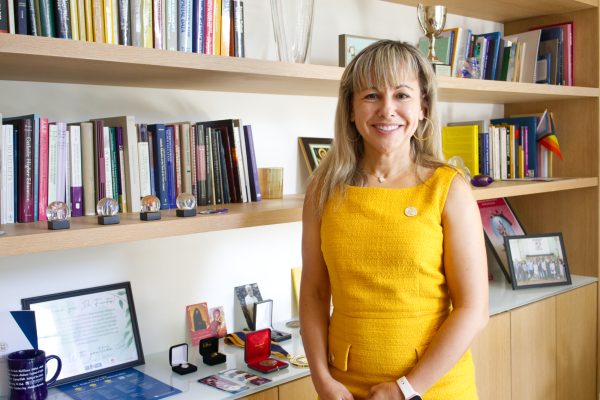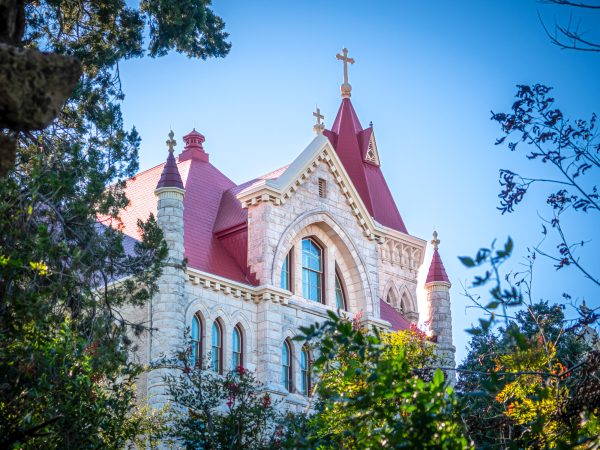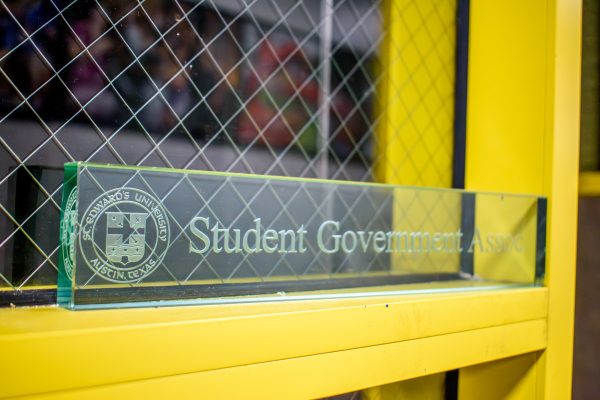Tree cut down on campus
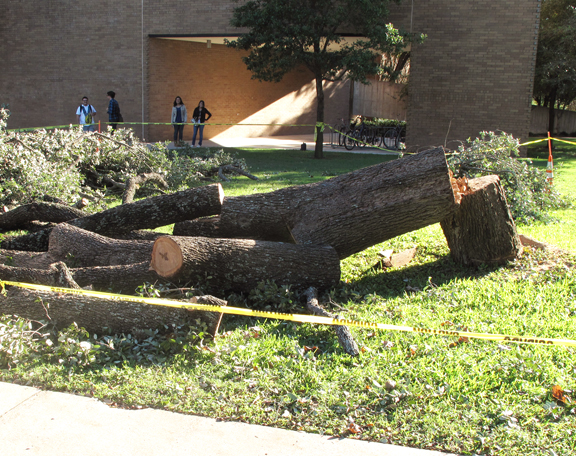
Workers cut down the tree between Moody Hall and Sorin Oak Oct. 22.
The the sound of a chainsaw could be heard echoing across the St. Edward’s University campus on Oct. 22 at about 2 p.m. The recent heavy rainfall in Austin—about 1.04 inches in a 24-hour period, according to the National Weather Service—caused the soil surrounding one of the campus’ live oak trees to pucker and buckle. Certified arborist Tom Dunlap, recently hired by St. Edward’s, said he noticed the tree between Moody Hall and the Sorin Oak had begun to tip over. The branches were drooping about three feet lower than normal, impeding traffic on one of the most used sidewalks on campus which links the Main Building to the John Brooks Williams Natural Science Center. Dunlap coned and taped off the area and contacted other university officials. “I knew something was wrong,” he said. “The soil was essentially failing and the tree was coming up out of the ground. There was nothing wrong with the tree, just the soil.” Dunlap said when roots begin to pull away from the soil, as was happening, there is no longer a sufficient anchor for the tree. Although trees can be re-guided and re-anchored in some cases, this particular tree was too old and too large to safely and economically justify this, he said. The re-anchoring would have cost upwards of $1,000, and there were no guarantees the soil would not fail again. “My job is to protect the liability of the school and to lower the risk of situations like this,” he said. After consulting Michael Peterson, the director of the Physical Plant, it was confirmed that the tree needed to come down for safety reasons. The Austin City Forester was contacted in order to gain a permit to cut the tree down. Around 2 p.m., campus maintenance crew and Dunlap began to cut the tree down in pieces and were finished within an hour. Dunlap said about four or five students stopped to ask him what was going on. “I like when people ask because I get to explain to them that we aren’t just cutting trees down,” he said. “Because I don’t like cutting down trees.” Dunlap was hired by St. Edward’s in August and has been assessing the campus landscape since then. He has begun to clear roadways and sightlines and take care of the trees in order to keep them healthy. He has also started his own project involving the well-known Sorin Oak. He said he has gathered about 100 acorns from the tree and is currently germinating them in hopes of producing small trees that can be replanted to keep the important heritage of the Sorin Oak alive. “If anything were to happen to the tree, we would lose its legacy,” he said. Dunlap has ideas for the incoming freshmen class to gather acorns every year as part of an orientation session. He wants to then germinate the seeds and allow the graduating seniors of that year to plant one of the seedlings on campus as a continuance of the Sorin Oaks’ heritage.
The Sorin Oak is the largest oak tree in Austin.Around 2 p.m. on Thursday, the sound of a chainsaw could beheard echoing across the St. Edward’s University campus.
Version:1.0StartHTML:0000000163EndHTML:0000002626StartFragment:0000002344EndFragment:0000002590SourceURL:file://localhost/Users/stupub/Desktop/tree.doc
The recent heavy rainfall in Austin—about 1.04 inches in a 24-hour period, according to the National Weather Service—caused the soil surrounding one of the campus’ live oak trees to pucker and buckle.
Certified arborist Tom Dunlap, recently hired by St. Edward’s, said he noticed the tree between Moody Hall and the Sorin Oak had begun to tip over. The branches were drooping about three feet lower than normal, impeding traffic on one of the most used sidewalks on campus which links the Main Building to the John Brooks Williams Natural Science Center. Dunlap coned and taped off the area and contacted other university officials. “I knew something was wrong,” he said. “The soil was essentially failing and the tree was coming up out of the ground. There was nothing wrong with the tree, just the soil.” Dunlap said when roots begin to pull away from the soil, as was happening, there is no longer a sufficient anchor for the tree. Although trees can be re-guided and re-anchored in some cases, this particular tree was too old and too large to safely and economically justify this, he said. The re-anchoring would have cost upwards of $1,000, and there were no guarantees the soil would not fail again. “My job is to protect the liability of the school and to lower the risk of situations like this,” he said. After consulting Michael Peterson, the director of the Physical Plant, it was confirmed that the tree needed to come down for safety reasons. The Austin City Forester was contacted in order to gain a permit to cut the tree down. Around 2 p.m., campus maintenance crew and Dunlap began to cut the tree down in pieces and were finished within an hour. Dunlap said about four or five students stopped to ask him what was going on. “I like when people ask because I get to explain to them that we aren’t just cutting trees down,” he said. “Because I don’t like cutting down trees.” Dunlap was hired by St. Edward’s in August and has been assessing the campus landscape since then. He has begun to clear roadways and sightlines and take care of the trees in order to keep them healthy. He has also started his own project involving the well-known Sorin Oak. He said he has gathered about 100 acorns from the tree and is currently germinating them in hopes of producing small trees that can be replanted to keep the important heritage of the Sorin Oak alive. “If anything were to happen to the tree, we would lose its legacy,” he said. Dunlap has ideas for the incoming freshmen class to gather acorns every year as part of an orientation session. He wants to then germinate the seeds and allow the graduating seniors of that year to plant one of the seedlings on campus as a continuance of the Sorin Oaks’ heritage. The Sorin Oak is the largest oak tree in Austin.


